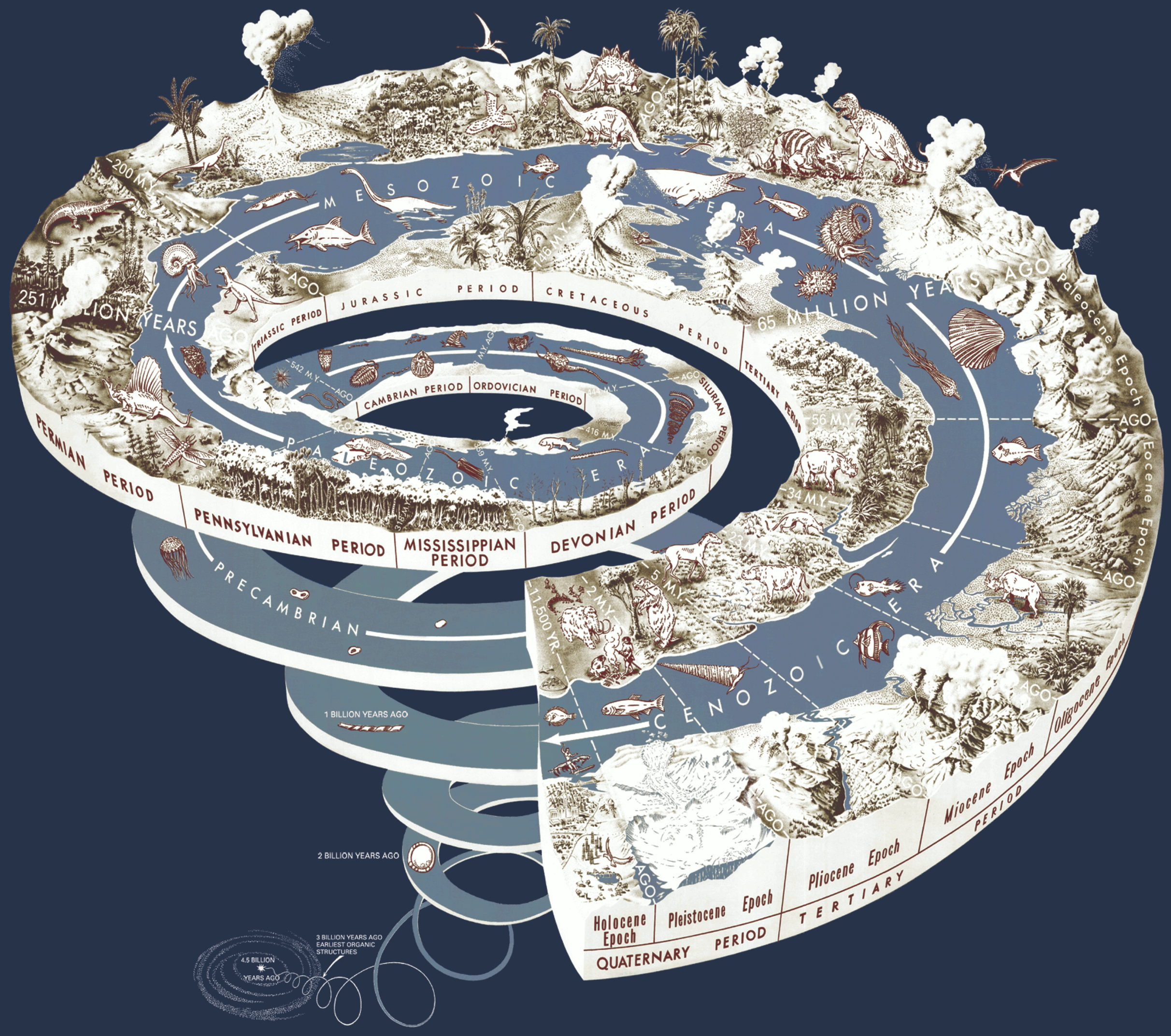![[Home]](http://www.bayleshanks.com/cartoonbayle.png)
This collection of notes is part of [1].
https://en.wikipedia.org/wiki/Geologic_time_scale
https://upload.wikimedia.org/wikipedia/commons/7/77/Geologic_Clock_with_events_and_periods.svg
https://en.wikipedia.org/wiki/Geologic_time_scale#Condensed_graphical_timelines


https://en.wikipedia.org/wiki/Template:Geological_history
everything after/below
everything after/below
everything after/below
"The 2.6 million years of the Quaternary represents the time during which recognizable humans existed. Over this short time period, there has been relatively little change in the distribution of the continents due to plate tectonics." -- [2]
"Homo is the genus of hominids that includes modern humans and species closely related to them. The genus is estimated to be about 2.8 million years old,[1][2][3][4][5] emerging with the appearance of Homo habilis from australopithecine ancestors." -- https://en.wikipedia.org/wiki/Homo
"Homo erectus appears about 2 million years ago and spreads throughout Eurasia. It was likely the first hominin to live in a hunter-gatherer society and to control fire, but disappeared 0.4 million years ago. Homo sapiens (anatomically modern humans) emerged about 0.2 million years ago, and is the only surviving species in the genus, all others having become extinct. Archaic humans did survive alongside H. sapiens until at least some 40,000 years ago (H. neanderthalensis[7]), and possibly until as late as the Epipaleolithic (about 12,000 years ago), and there is evidence of limited interbreeding of archaic and modern humans. Modern humans migrated from Africa some 60,000 years ago, and in the course of the Upper Paleolithic spread throughout Eurasia, Oceania and the Americas." -- https://en.wikipedia.org/wiki/Homo
"The climate was one of periodic glaciations with continental glaciers moving as far from the poles as 40 degrees latitude. There was a major extinction of large mammals in Northern areas at the end of the Pleistocene Epoch. Many forms such as saber-toothed cats, mammoths, mastodons, glyptodonts, etc., became extinct worldwide." -- [3]
"The Quaternary period saw the extinctions of numerous predominantly larger, especially megafaunal, species, many of which occurred during the transition from the Pleistocene to the Holocene epoch. However, this extinction wave did not stop at the end of the Pleistocene, but continued, especially on isolated islands, in Holocene extinctions. Among the main causes hypothesized by paleontologists are natural climate change and overkill by humans, who appeared during the Middle Pleistocene and migrated to many regions of the world during the Late Pleistocene and Holocene. A variant of the latter possibility is the second-order predation hypothesis, which focuses more on the indirect damage caused by overcompetition with nonhuman predators. The spread of disease is also discussed as a possible reason." -- https://en.wikipedia.org/wiki/Quaternary_extinction_event
" There are three main hypotheses concerning the Pleistocene extinction:
The animals died off due to climate change associated with the advance and retreat of major ice caps or ice sheets.
The animals were exterminated by humans: the "prehistoric overkill hypothesis" (Martin, 1967).[1]
The extinction of the woolly mammoth (by whatever cause, perhaps by humans) changed the extensive grasslands to birch forests, and subsequent forest fires then changed the climate.[2] We now know that immediately after the extinction of the mammoth that birch forests replaced the grasslands and that an era of significant fire began.[3]" -- https://en.wikipedia.org/wiki/Quaternary_extinction_event#The_Pleistocene_or_Ice_Age_extinction_eventAlso approximately coincides with the 'paleolithic' age of human prehistory.